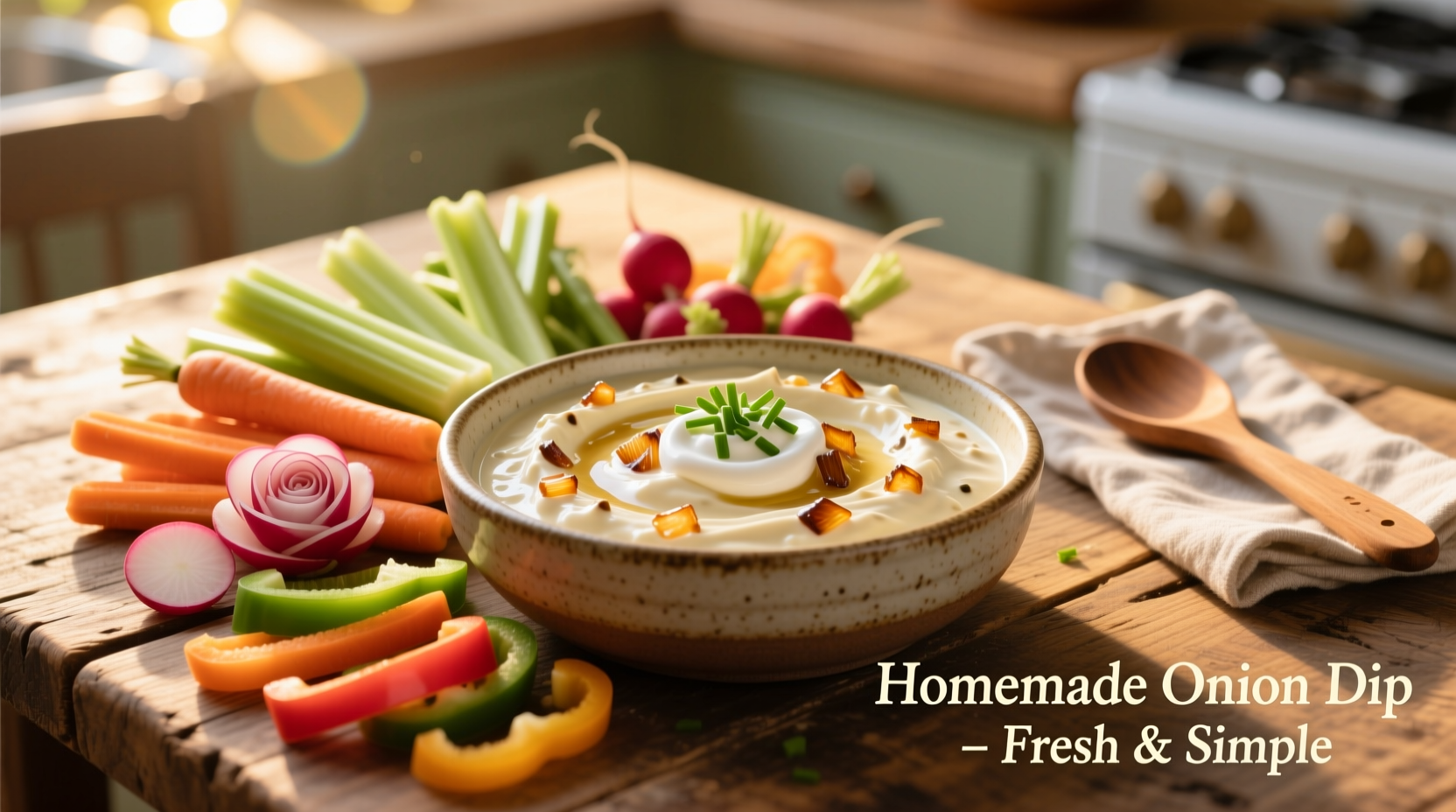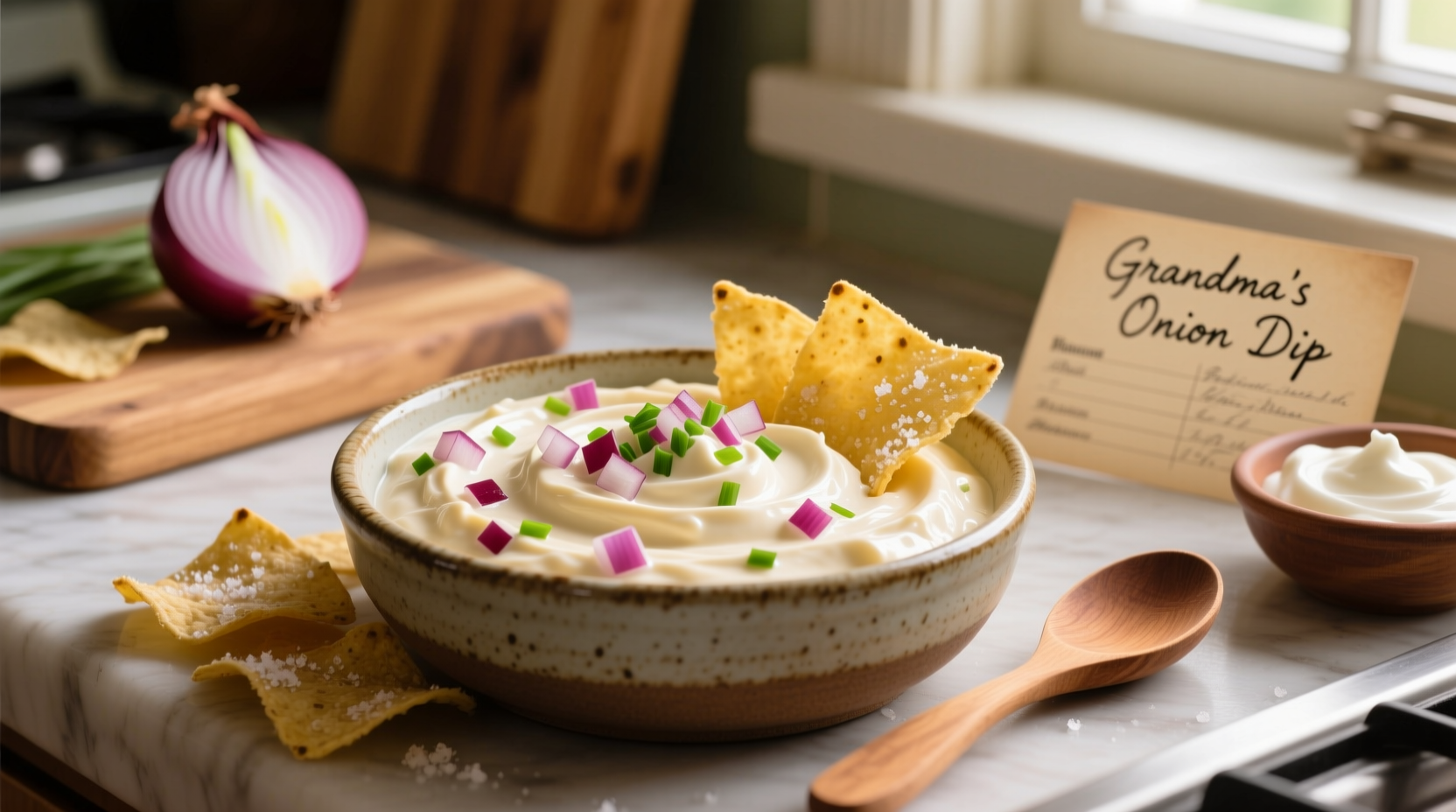Why Your Onion Dip Deserves Homemade Treatment
Store-bought onion dips often rely on artificial flavors, excessive sodium, and preservatives that mask the natural sweetness of onions. When you make homemade onion dip from scratch, you control every element - from the quality of dairy ingredients to the precise caramelization of onions. Professional chefs consistently prefer the depth of flavor achieved through slow-cooked onions rather than powdered alternatives.

The Evolution of Onion Dip: From Mid-Century Staple to Modern Favorite
Onion dip emerged as a popular appetizer during America's post-war culinary evolution. According to the Food Timeline, the first published recipe resembling modern onion dip appeared in the 1950s, often using dried onion soup mix as a convenient base. By the 1970s, it had become a staple at social gatherings, though early versions frequently lacked authentic onion flavor.
| Era | Key Characteristics | Common Ingredients |
|---|---|---|
| 1950s-1960s | Convenience-focused, powdered base | Dried onion soup mix, sour cream |
| 1970s-1980s | Increased popularity, standardized recipes | Pre-packaged mixes, mayonnaise additions |
| 1990s-Present | Return to scratch cooking, artisanal variations | Fresh onions, quality dairy, custom seasonings |
Building Blocks of Exceptional Homemade Onion Dip
The magic happens when you understand how each component contributes to the final flavor profile. Forget those store-bought onion dip alternatives - these ingredients create something special:
Onion Selection Guide: Matching Variety to Occasion
Not all onions work equally well in dip recipes. Understanding these onion dip ingredient differences ensures perfect results every time:
- Yellow onions - Best for deep, complex flavor when caramelized slowly (ideal for game day gatherings)
- Red onions - Add vibrant color and slightly sharper taste (perfect for summer parties)
- Shallots - Provide delicate, sweet flavor (elegant option for dinner parties)
- Green onions - Offer fresh, mild onion flavor (great for lighter spring gatherings)
Step-by-Step: Crafting Perfect Homemade Onion Dip
Essential Equipment
You'll need a medium skillet for caramelizing onions and a mixing bowl. Professional kitchens often use a FDA-recommended non-reactive stainless steel bowl for mixing to prevent flavor contamination.
Caramelizing Onions: The Flavor Foundation
This critical step separates exceptional homemade onion dip recipes from mediocre versions:
- Thinly slice 2 large yellow onions (about 3 cups)
- Melt 2 tablespoons butter with 1 tablespoon olive oil in skillet over medium-low heat
- Add onions and 1/4 teaspoon salt to draw out moisture
- Cook slowly for 25-30 minutes, stirring occasionally, until deep golden brown
- Cool completely before mixing with dairy ingredients
Final Assembly: Creating Perfect Texture and Flavor Balance
Combine in a bowl:
- 1 cup full-fat sour cream (room temperature)
- 1/2 cup mayonnaise (preferably real mayonnaise)
- Caramelized onions
- 1 teaspoon Worcestershire sauce
- 1/4 teaspoon garlic powder
- 2 tablespoons fresh chives, finely chopped
- Salt and freshly ground black pepper to taste
Mix thoroughly but gently to maintain texture. Refrigerate for at least 2 hours before serving to allow flavors to meld. This easy homemade onion dip will keep for 4-5 days in an airtight container.
Customizing Your Homemade Onion Dip Experience
Once you've mastered the basic technique, experiment with these popular variations:
Flavor Enhancements
- Smoky version: Add 1/4 teaspoon smoked paprika or a few drops of liquid smoke
- Spicy kick: Mix in 1-2 teaspoons of your favorite hot sauce
- Herb-forward: Double the fresh herbs with additions like dill or parsley
- Extra umami: Stir in 1 teaspoon soy sauce or mushroom powder
Serving Suggestions That Impress
Elevate your homemade onion dip presentation with these professional tips:
- Chill your serving dish beforehand to keep the dip cool longer
- Garnish with additional fresh chives and a sprinkle of paprika
- Offer a variety of dippers: kettle chips, pita chips, vegetable crudités, and pretzels
- For elegant gatherings, serve in a hollowed-out bread bowl
Common Homemade Onion Dip Mistakes to Avoid
Even experienced cooks make these errors when preparing onion dip from scratch:
- Rushing the caramelization - Properly caramelized onions take time; don't increase heat
- Using cold dairy ingredients - Bring sour cream and mayo to room temperature first
- Over-seasoning before chilling - Flavors intensify as the dip rests
- Serving immediately - Always allow at least 2 hours for flavors to develop
Homemade vs. Store-Bought: The Real Comparison
Understanding these key differences explains why making onion dip at home is worth the minimal extra effort:
| Factor | Homemade Onion Dip | Store-Bought Dip |
|---|---|---|
| Flavor Complexity | Rich, layered onion flavor from caramelization | Often one-dimensional, artificial onion taste |
| Ingredient Quality | Full control over dairy quality and freshness | Often contains stabilizers and preservatives |
| Sodium Content | Adjustable to personal preference | Typically high (300-400mg per serving) |
| Customization | Endless variations possible | Fixed formula with limited options |











 浙公网安备
33010002000092号
浙公网安备
33010002000092号 浙B2-20120091-4
浙B2-20120091-4